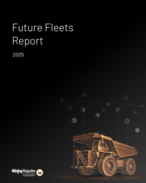This article is 19 years old. Images might not display.
The technique uses deep lateral slots radiating from the borehole close to the seam, which act like natural defects to initiate fractures in the rock and direct explosive gases away from the seam. Although slots have been used in the past for better fracture control, they have not previously been employed to reduce blast damage.
A team led by CRCMining’s Dr Mehmet Doktan has developed a high-pressure slotting tool, whose unique features include:
-
An ability to create slots more than three times the borehole diameter;
-
It can be used to create cavities that allow concentration of explosive in hard zones;
-
It uses high-pressure water jets of varying sizes to suit the rock type;
-
It can be a stand-alone system or fitted to an existing drill rig;
-
It can be adapted to create vertical slots; and
- It is simple, robust and cost effective.
The slotting technique also decreases sub-drilling requirements and offers improvements to blast fragmentation and presplitting, Doktran said.
“We demonstrated the concept in a series of test blasts using relatively small-diameter holes. These showed clearly that the slots act to reduce damage to the underlying coal seam by directing the force of the blast away from it. We plan to do further tests to confirm this, involving large boreholes.”
“Current measures to manage blasting energy include closer attention to appropriate stand-off distances, and using techniques such as baby decking and seam buffering. These methods lack practicality, are expensive and of limited value unless correctly and accurately implemented. At best they are only a partial solution to the problem,” he says.
“We are confident that borehole slotting will deliver a better result, leading to less damage to coal and better returns to producers.”
Funding from the Australian Coal Association Research Program has fast-tracked development of this new technique.
Australia's Mining Monthly























